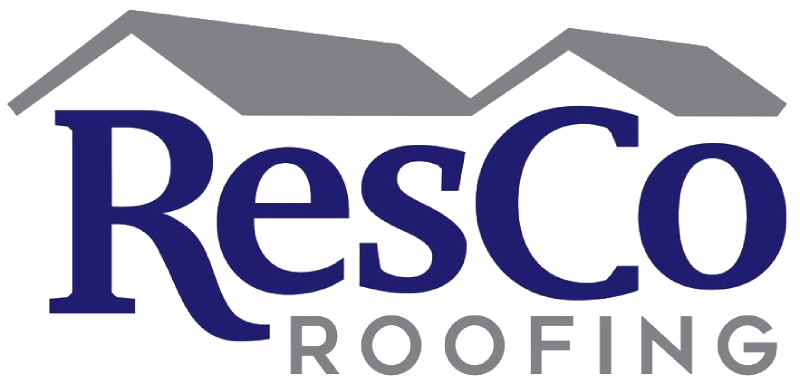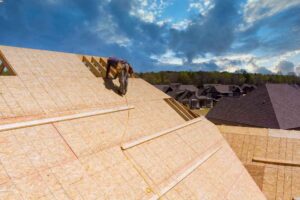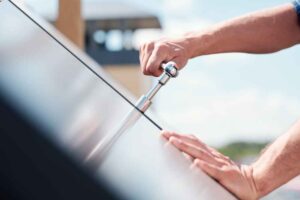The Aesthetic Impact of Roofing: Choosing the Best Style and Color for Your Home
In the great canvas of your home’s architecture, the roofing design plays a significant role in the overall aesthetic appeal. Often overlooked, the style and color of your roof can either elevate the elegance of your property or detract from it. With the enhancement of digital tools and the awareness of curb appeal’s value, the choices you make about your roof are more crucial than ever. This blog post navigates through the aesthetic considerations you should take into account when selecting your roofing style and color, ensuring that your choice harmonizes with your home’s character and personal taste.
Understanding Roofing Styles
Roofing styles vary in shape, slope and complexity. The architectural design of your home is the determiner of which roofing style will fit best.
- Flat Roofing: Considered to be a modernist option, flat roofs have minimal slopes and are relatively easy to construct. However, it requires frequent maintenance due to its lack of drainage and vulnerability to debris buildup. This style works best for contemporary and minimalist homes.
- Gable Roofing: This is the most popular roofing style, characterized by two sloping sides that meet at a central ridge. The steep pitch of gable roofs allows water and debris to slide off easily, making them low maintenance. They are versatile and can be found on various home designs, from traditional to modern.
- Hip Roofing: Similar to gable roofs, hip roofs have four sloping sides that meet at a central point. However, the difference is that all four sides are of equal length and slope downwards towards the walls. This style is highly stable and durable against strong winds and harsh weather conditions, making it suitable for coastal areas.
- Mansard Roofing: This style is also known as a French roof, characterized by two different slopes on each side of the roof. The upper slope is less steep than the lower one, creating a flat top that can be utilized as an additional living space such as an attic. Mansard roofs are commonly found in Victorian and Second Empire architectural styles.
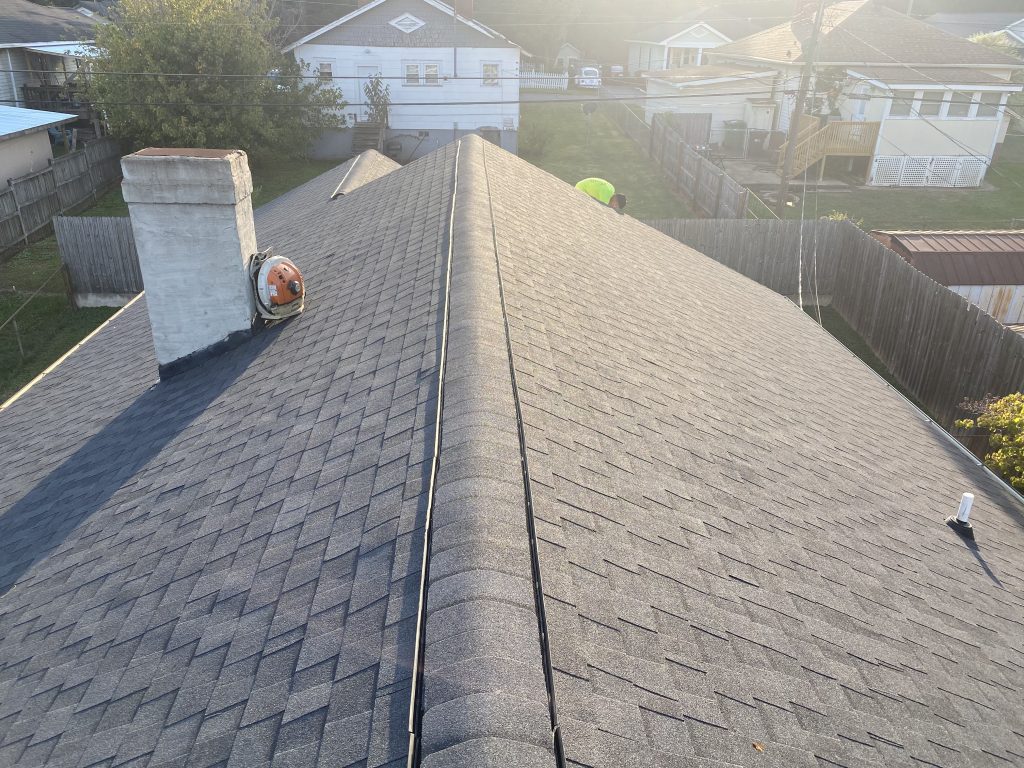
Exploring Roofing Materials
When selecting a roofing material, durability and aesthetics must go hand-in-hand. Modern advancements have expanded the available options, catering to various stylistic preferences and functional needs.
- Asphalt Shingles: This is the most common roofing material due to its cost-effectiveness, ease of installation, and versatility in color and style. Suitable for a wide range of architectural designs, asphalt shingles provide decent durability, typically lasting 20-30 years.
- Metal Roofing: Offering superior longevity and resistance to extreme weather conditions, metal roofs can last up to 50 years or more. They come in a variety of styles, including panels and shingles, and a wide spectrum of colors. Metal roofing is an excellent choice for homes aiming for a modern or industrial look.
- Clay and Concrete Tiles: Known for their distinct Mediterranean and Spanish colonial aesthetics, these materials are highly durable and can withstand harsh climates. While heavier and more expensive than other options, clay and concrete tiles offer a unique appearance and exceptional longevity, often surpassing 50 years.
- Slate Roofing: Slate stands out for its natural beauty and unmatched durability, with a lifespan that can exceed 100 years. It’s one of the most expensive roofing materials, but it’s a worthwhile investment for homes in historical or luxury categories, offering timeless elegance and substantial resale value.
- Wood Shingles and Shakes: For those seeking a rustic or traditional look, wood shingles and shakes provide a natural charm that ages beautifully. However, they require more maintenance than other materials and are more susceptible to fire and weather damage unless treated with fire retardants and moisture-resistant coatings.
Choosing the right roofing material involves balancing aesthetic desires with practical considerations such as climate, maintenance requirements, and budget. By selecting a material that aligns with your home’s architectural style and your personal taste, you can enhance both the functionality and curb appeal of your property.
Selecting the Perfect Color
Choosing the right color for your roofing material is just as crucial as selecting the style and material itself, influencing the overall aesthetic and harmony of your home’s exterior. The right color not only complements the architectural style of your home but also plays a vital role in heat absorption, potentially affecting your home’s energy efficiency. Here are several considerations to keep in mind when selecting the perfect color for your roof:
- Architectural Style and Color Palette: Consider the inherent color scheme of your home’s architectural style. Traditional homes might benefit from more classic colors like blacks, browns, and grays, while contemporary homes can experiment with bolder, unconventional hues.
- Climate Considerations: In warmer climates, lighter colors that reflect rather than absorb heat are preferred. Conversely, in cooler regions, darker colors can help retain heat and reduce heating costs.
- Neighborhood and Environment: Take into account the colors of neighboring houses and the natural surroundings. Choosing a color that harmonizes with nearby homes and the environment can enhance visual cohesion and potentially increase property value.
- Visibility and Maintenance: Darker colors may more readily reveal dust and debris, requiring more frequent cleaning, whereas lighter colors might conceal these better. However, very light colors might show algae or mold more predominantly in damp climates.
Ultimately, the choice of roofing color is a balance between aesthetic preference, practicality, and environmental considerations. It is advisable to request samples of your chosen materials in various colors to visualize how they will look in different lighting conditions throughout the day. This careful consideration ensures that your roofing not only protects your home but also enhances its beauty and value for years to come.
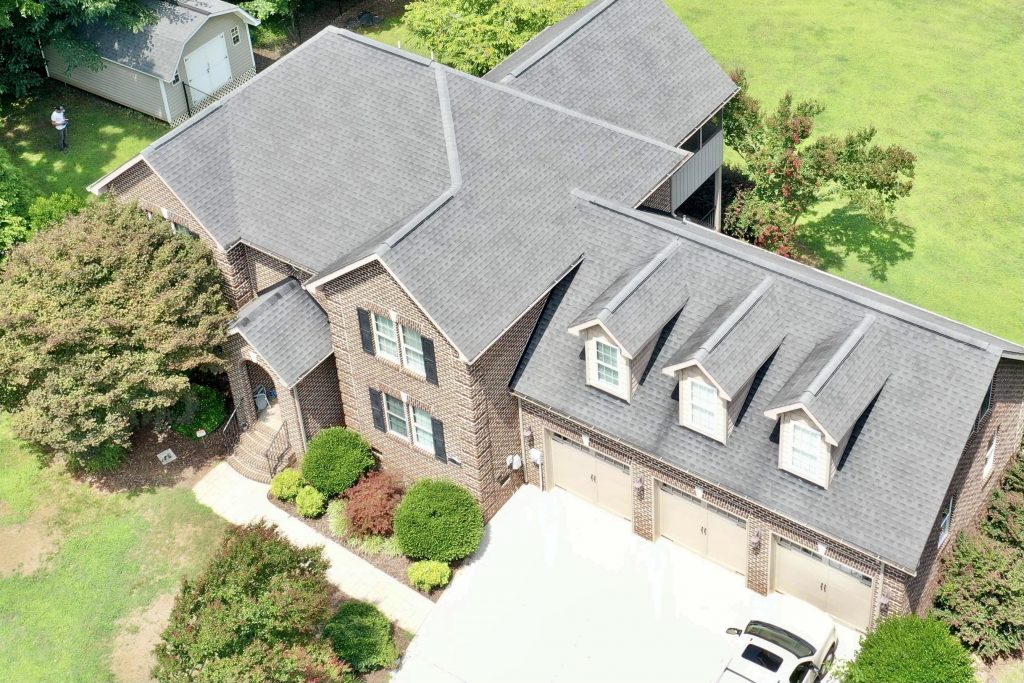
Trends in Roofing Design
The roofing industry is constantly evolving, driven by technological advancements and changing homeowner preferences. Recent trends in roofing design not only aim to enhance aesthetic appeal but also prioritize sustainability, energy efficiency, and resilience. Here are some key trends shaping the future of roofing:
- Solar Roof Tiles: With a growing emphasis on renewable energy, solar roof tiles are becoming increasingly popular. These tiles seamlessly integrate with the existing roofing material, offering a more aesthetically pleasing alternative to traditional solar panels. They are designed to capture solar energy while providing protection equivalent to conventional shingles.
- Cool Roofing Technologies: Cool roofs are designed to reflect more sunlight and absorb less heat than a standard roof, significantly reducing cooling costs in warmer climates. Advances in materials and coatings enable a wide range of roofing products to be part of this energy-efficient category, including tiles, shingles, and membranes.
- Green Roofs and Living Roofs: Green or living roofs, which are partially or completely covered with vegetation, are gaining traction in urban environments. They offer numerous benefits, including improved stormwater management, increased insulation, extended roof lifespan, and enhanced biodiversity.
- Synthetic Roofing: Synthetic roofing materials, made from rubber and plastic composites, mimic the appearance of traditional materials such as slate and wood shakes but offer superior durability and lower maintenance. These materials are lightweight, fire-resistant, and can withstand harsh weather conditions, making them an excellent choice for homeowners looking for longevity and style.
These trends reflect a shift towards more durable, environmentally friendly, and energy-efficient roofing options. Homeowners and builders are now more than ever equipped to choose roofing solutions that not only meet aesthetic and functional requirements but also contribute positively to environmental sustainability.
Practical Tips for Choosing the Best Roofing
When it comes to choosing the best roofing option for your home, it’s essential to consider both the immediate and long-term aspects of your decision. Here are some practical tips to guide you through the selection process:
- Consult with a Professional: A roofing expert can provide valuable insights into the most suitable materials for your home’s architectural style and local climate. They can also advise on the latest trends and technologies that could enhance your home’s efficiency and appeal.
- Consider the Weight of the Material: Ensure your home’s structure can support the weight of the chosen roofing material. Heavy options like slate may require additional support, which can impact your budget and renovation timeline.
- Understand the Maintenance Requirements: Each roofing material comes with its own maintenance needs. Opt for materials that fit your lifestyle and ability to perform regular upkeep to ensure longevity and performance.
- Check Warranty and Lifespan: Different materials offer varying levels of durability and warranty coverage. A longer warranty and lifespan often indicate a more durable product, potentially saving you money on repairs or replacements in the long run.
- Evaluate the Cost-Effectiveness: While initial costs are an important factor, consider the long-term savings that more durable or energy-efficient materials might provide. Sometimes, investing more upfront can lead to significant savings on repairs, maintenance, or energy bills over time.
- Sample in Natural Lighting: Before making a final decision, view your shortlisted materials under natural light at different times of the day. This will give you the most accurate representation of how they will look once installed.
These recommendations should empower homeowners with the knowledge to make informed choices that balance aesthetic appeal with practicality and durability, ultimately selecting the best roofing option for their needs and preferences.
Budgeting for Roofing: Cost vs Value
When considering a new roofing project, understanding the balance between cost and value is crucial. The initial expense of roofing materials and installation is a significant factor for many homeowners. However, it’s important to weigh this initial cost against the long-term value the roofing choice will provide. Premium materials such as metal, slate, or synthetic options might have a higher upfront cost but tend to offer greater durability, lower maintenance requirements, and improved energy efficiency. This can translate into cost savings over time through fewer repairs, reduced energy bills, and even potential discounts on home insurance.
Furthermore, investing in high-quality roofing can significantly enhance the curb appeal and value of your home, potentially offering a high return on investment if you decide to sell. It’s advisable to conduct a thorough cost-benefit analysis, considering both the immediate financial outlay and the long-term advantages. Exploring financing options, such as loans or manufacturer payment plans, can also make a high-quality roofing project more accessible. Always ensure to factor in the potential energy savings and increased property value when budgeting for your roofing project to make an informed decision that balances both cost and value.
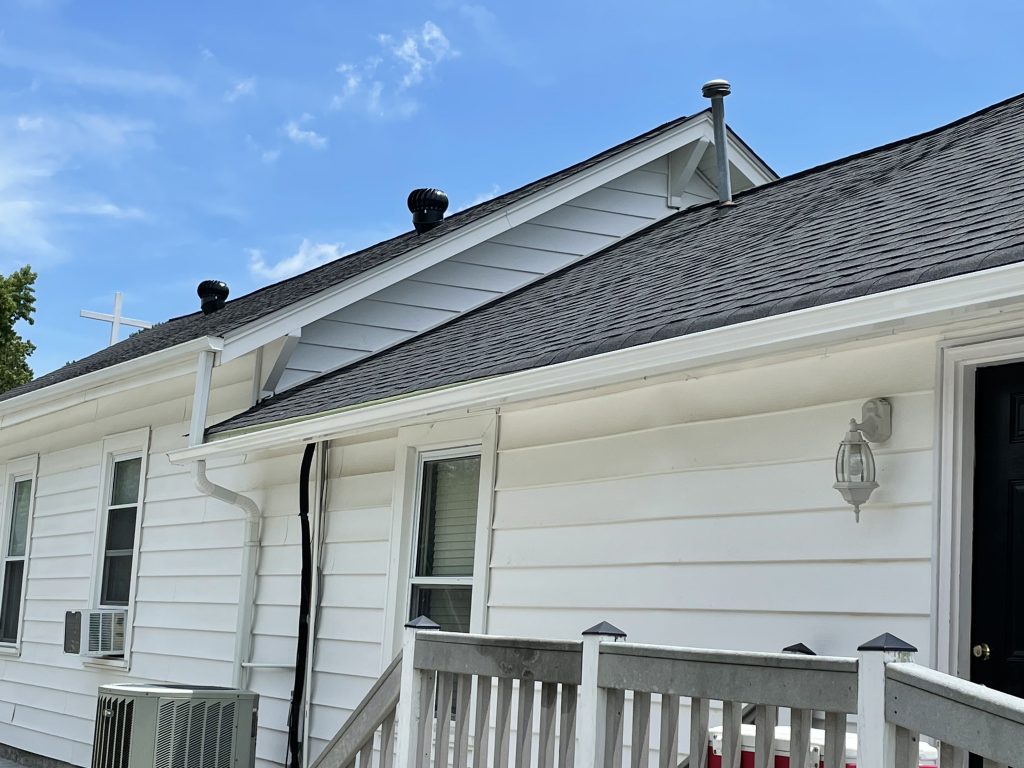
Tips for Choosing a Professional Roofing Contractor
Choosing a professional roofing contractor is critical for ensuring the success and longevity of your roofing project. Here are essential tips to help you select a reliable and skilled contractor:
- Check for Licensing and Insurance: Always verify that the roofing contractor is licensed to operate in your area and carries both liability insurance and workers’ compensation insurance. These credentials protect you in case of accidents or damage during the project.
- Experience Matters: Look for a contractor with a solid track record of roofing projects similar to yours. Experience in the industry is often a good indicator of reliability and the ability to handle any unforeseen issues that may arise.
- Get Multiple Quotes: Obtain quotes from several contractors to compare prices, materials, and warranty offers. This comparison will help you understand the market rate and assist in making an informed decision.
- Review Their Past Work: Ask for references or portfolio of previous projects. If possible, visit some of the completed projects to assess the quality of workmanship and materials used.
- Read Reviews and Check Ratings: Online reviews and ratings on websites such as the Better Business Bureau (BBB) can provide insight into the contractor’s reputation and customer satisfaction levels.
- Understand the Warranty: Make sure you understand the warranty that comes with the work. A good contractor will offer a warranty that covers both materials and labor in case any issues arise after the project is completed.
- Communication is Key: Choose a contractor who communicates clearly and promptly. Good communication will ensure that your project expectations align, and any queries or concerns you have are addressed in a timely manner.
By following these tips, you can increase your chances of finding a professional roofing contractor who will complete your project on time, within budget, and to a high standard, providing you with peace of mind and a durable, well-constructed roof.
In conclusion, choosing the right roofing material and contractor are essential steps in any home renovation project. By considering factors such as weight, maintenance requirements, warranty and lifespan, cost-effectiveness, and natural lighting samples, homeowners can make informed decisions that balance both aesthetics and practicality. Additionally, by understanding the value and potential return on investment of different roofing materials, conducting a thorough cost-benefit analysis, and choosing a reputable contractor, homeowners can ensure the success and longevity of their roofing project.
https://www.google.com/maps?cid=6129032492384724290
